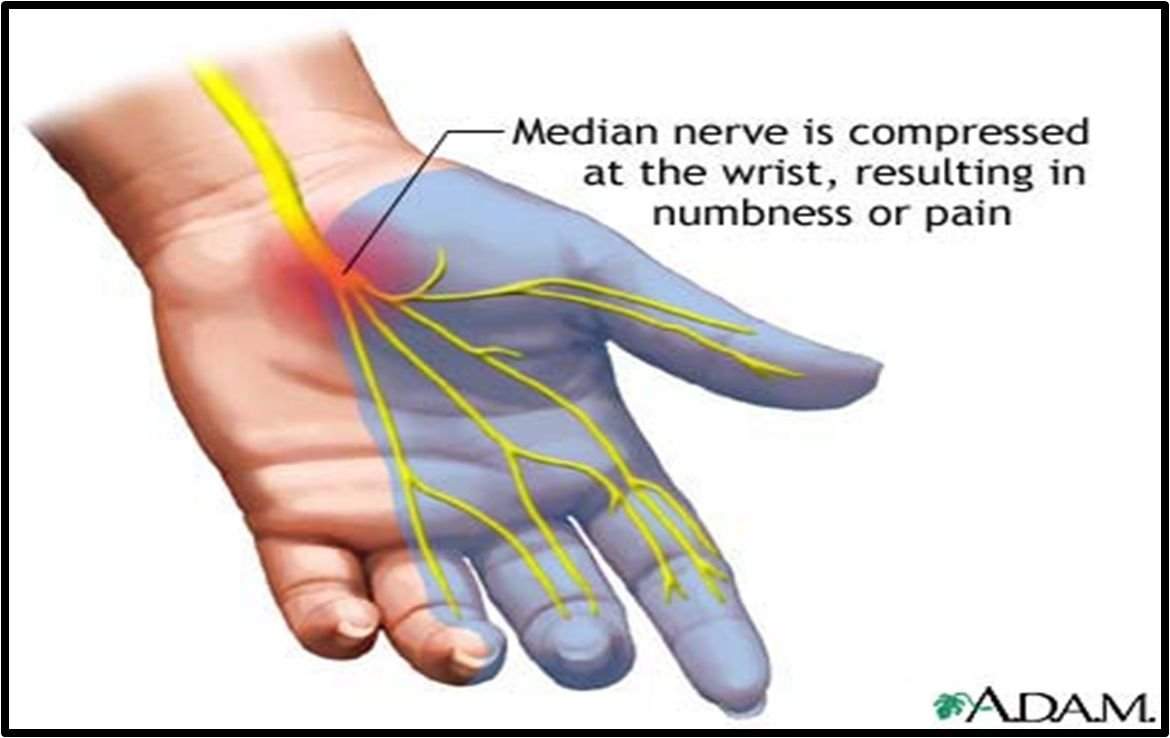The carpal tunnel is a narrow passageway of ligament and bones at the base of the hand. The median nerve travels through the wrist at the carpal tunnel. A pressure within the tunnel may put the nerve at risk, trap it and lead to carpal tunnel syndrome.
Symptoms of carpal tunnel syndrome:
Symptoms of carpal tunnel syndrome may include numbness and pain in the fingers and weakness in the hand. These symptoms may be worse at night.
The situation is more common in pregnant women, women of average age, and in people whose jobs include daily repeated hand movements.
Diagnose and Treatment of carpal tunnel syndrome:
The diagnosis, after a good case history and a good evaluation of the clinical findings, is confirmed by the studying of neural conductivity, e.g. an electromyogram. There, we examine the time it takes for an electrical signal to traverse the nerve distance required. The delay of signals is an indication of carpal tunnel syndrome.
Physiotherapy is very effective, using the methods of manual therapy and nervous mobilization aiming at nerve release.
If conservative treatments fail and the patient continues to have nerve damage (such as weakness of the muscles of the thumb or deep numbness), then the carpal tunnel can be released by surgical incision of the ligament to give the nerve root more space. This procedure is a surgery performed with great reliability.
This post is also available in: Greek




